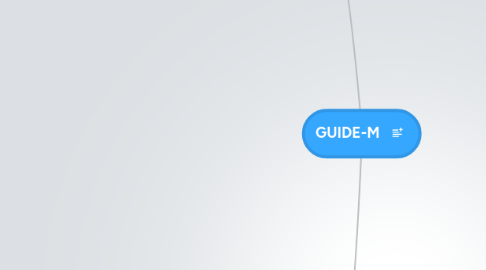
1. 1. Creation of Content
1.1. Stakeholder Involvement
1.1.1. Credibility of guideline development group
1.1.2. Disclosure of conflict of interest
1.2. Evidence synthesis
1.2.1. 1. WHAT - Reporting of what is needed
1.2.2. 2. HOW - Execution of what is needed
1.2.2.1. Evidence-based
1.2.2.2. Valid & Reliable
1.2.2.3. Transparent
1.2.3. 3. WHEN - Updating / Currency
1.3. Considered Judgment
1.3.1. Clinical Applicability
1.3.1.1. Clinical relevance
1.3.1.2. Appropriatness of patient population
1.3.1.3. Considered Implementation
1.3.2. Values
1.3.2.1. Professional/Provider Values
1.3.2.1.1. Clinical judgment
1.3.2.1.2. Clinical freedom
1.3.2.2. Patient Values
1.3.2.2.1. Acceptability
1.3.2.2.2. Patient Preferences
1.3.2.3. Guideline developer values
1.4. Feasibility
1.4.1. Local Applicability
1.4.1.1. Local adaptation
1.4.1.2. Application tools and strategies
1.4.2. Resource Constraints
1.4.2.1. Availability of resources
1.4.2.2. Economic Outcomes
1.4.3. Novelty
1.4.3.1. Compatibility
1.4.3.2. Requires new knowledge and skills
2. 2. Communication of Content
2.1. Message
2.1.1. Simple
2.1.1.1. Avoidance of Information Overload
2.1.1.2. Avoidance of Complexity
2.1.2. Clear
2.1.2.1. Actionable
2.1.2.1.1. Specific
2.1.2.1.2. Unambiguous
2.1.2.2. Effective writing
2.1.3. Persuasive
2.1.3.1. Framing
2.1.3.2. Relative advantage
2.2. Format
2.2.1. Multiple Versions of guideline documents
2.2.1.1. End Users
2.2.1.2. Versions
2.2.1.2.1. Flat
2.2.1.2.2. Dynamic
2.2.1.3. Document Type
2.2.2. Components
2.2.3. Presentation
2.2.3.1. Layout of full document
2.2.3.1.1. Placement of visual elements
2.2.3.1.2. Length
2.2.3.2. Structure within sections
2.2.3.2.1. Match System to the Real world
2.2.3.2.2. Sequential arrangement/Bundling
2.2.3.3. Information Visualization
2.2.3.3.1. Information Display
2.2.3.3.2. Information Context
